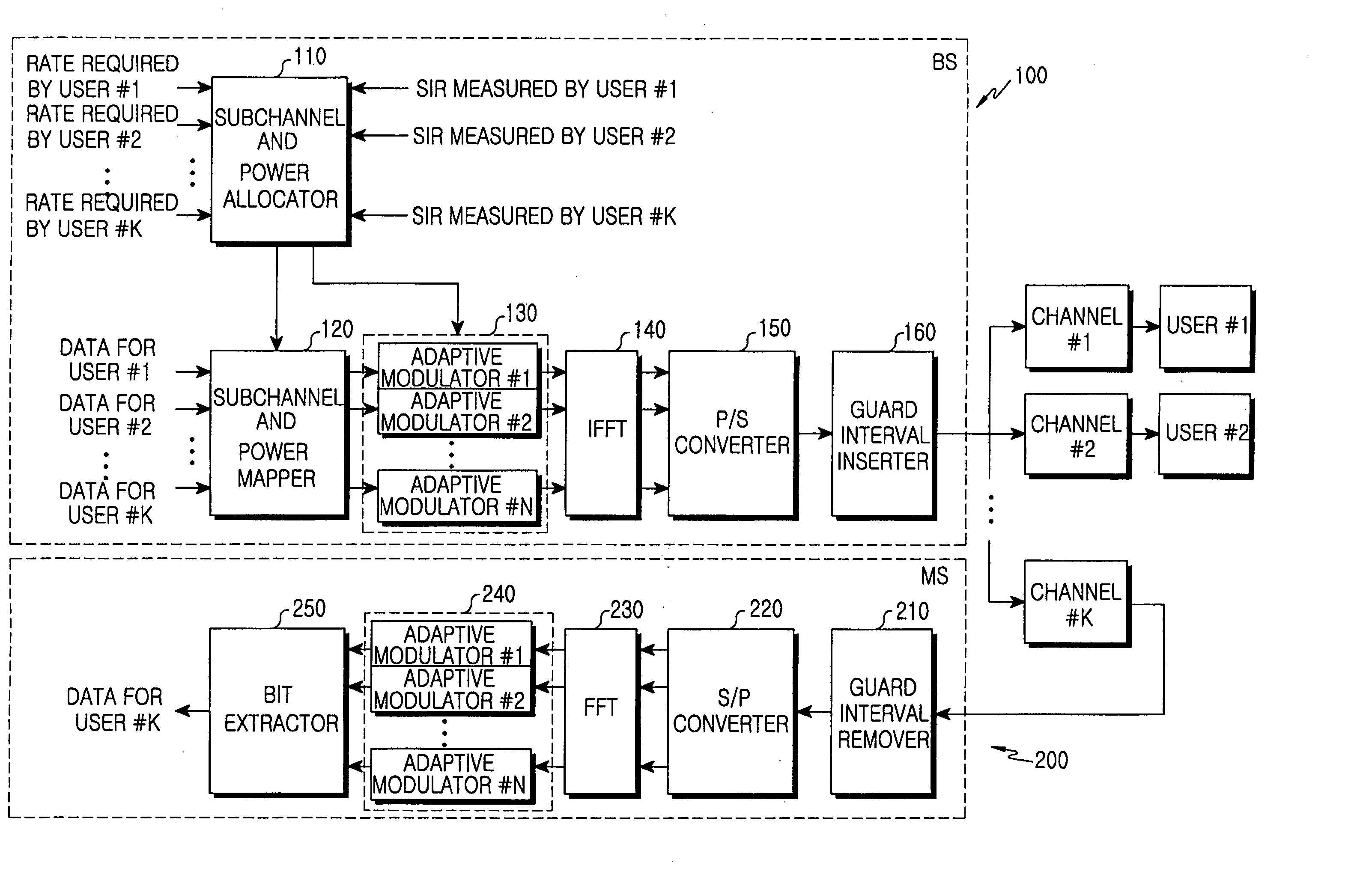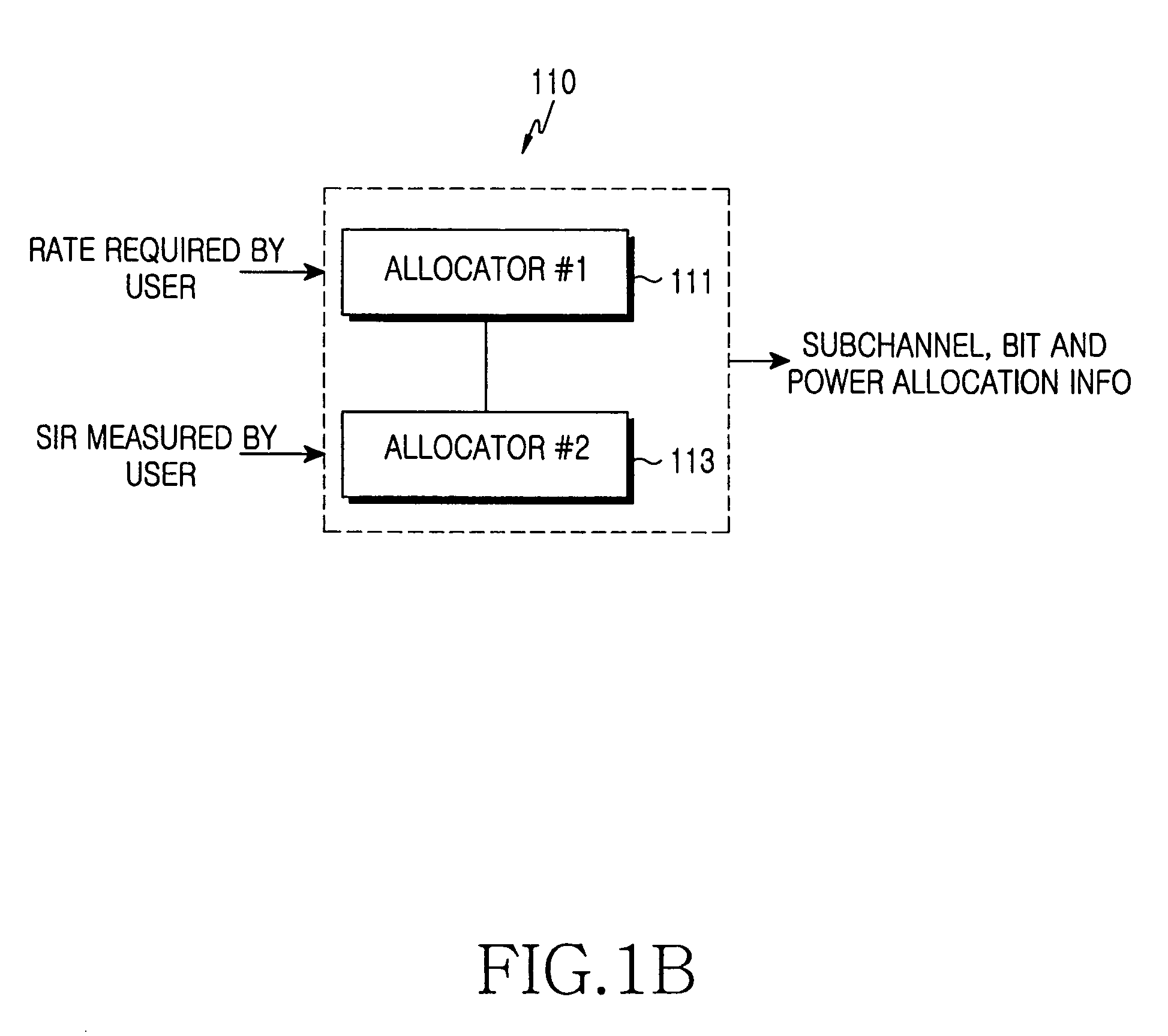Apparatus and method for allocating subchannel and power in an orthogonal frequency division multiple access system
a technology of multiple access and subchannels, applied in the direction of payload allocation, digital transmission, transmission path sub-channel allocation, etc., can solve the problems of frequency efficiency, intercell interference, co-channel interference,
- Summary
- Abstract
- Description
- Claims
- Application Information
AI Technical Summary
Benefits of technology
Problems solved by technology
Method used
Image
Examples
Embodiment Construction
[0033] Several exemplary embodiments of the present invention will now be described in detail with reference to the annexed drawings. In the following description, a detailed description of known functions and configurations incorporated herein has been omitted for clarity and conciseness.
[0034] Embodiments of the present invention aim to maximize the full BS data rate while lifting the restrictions on the user required data rates and the total BS transmission power in a cell where a user for transmitting / receiving non-real-time data (hereinafter referred to as a “non-real-time data user”), having a required data rate of a zero or positive value, coexists with a user for transmitting / receiving real-time data (hereinafter referred to as a “real-time data user”), having a required data rate of a positive value.
[0035] To this end, a subchannel and power allocation scheme according to an embodiment of the present invention is roughly divided into two steps. In a first step, a BS satis...
PUM
 Login to View More
Login to View More Abstract
Description
Claims
Application Information
 Login to View More
Login to View More - R&D
- Intellectual Property
- Life Sciences
- Materials
- Tech Scout
- Unparalleled Data Quality
- Higher Quality Content
- 60% Fewer Hallucinations
Browse by: Latest US Patents, China's latest patents, Technical Efficacy Thesaurus, Application Domain, Technology Topic, Popular Technical Reports.
© 2025 PatSnap. All rights reserved.Legal|Privacy policy|Modern Slavery Act Transparency Statement|Sitemap|About US| Contact US: help@patsnap.com



